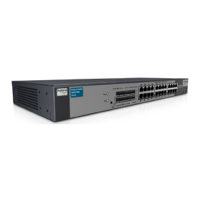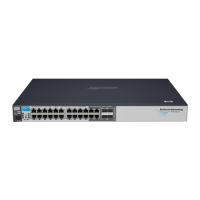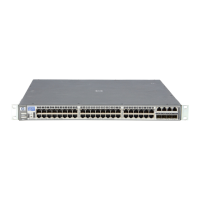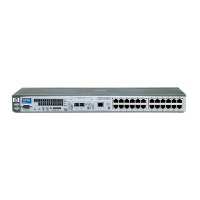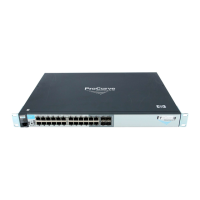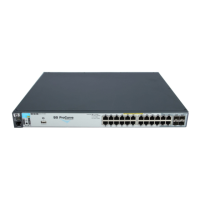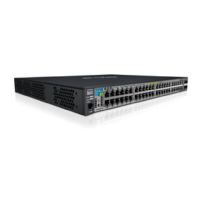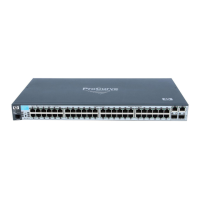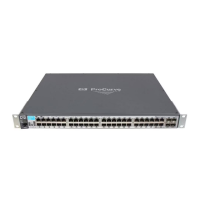Port Status and Basic Configuration
Viewing Port Status and Configuring Port Parameters
Configuring HP Auto-MDIX
Copper ports on the switch can automatically detect the type of cable config-
uration (MDI or MDI-X) on a connected device and adjust to operate appro-
priately.
This means you can use a “straight-through” twisted-pair cable or a “cross-
over” twisted-pair cable for any of the connections—the port makes the
necessary adjustments to accommodate either one for correct operation. The
10/100/1000-T port supports the IEEE 802.3ab standard, which includes the
“Auto MDI/MDI-X” feature.
Using the 10/100/100-T port:
■ If you connect a copper port using a straight-through cable to a port on
another switch or hub that uses MDI-X ports, the switch port automati-
cally operates as an MDI port.
■ If you connect a copper port using a straight-through cable to a port on
an end node, such as a server or PC, that uses MDI ports, the switch port
automatically operates as an MDI-X port.
HP Auto-MDIX was developed for auto-negotiating devices, and was shared
with the IEEE for the development of the IEEE 802.3ab standard. HP Auto-
MDIX and the IEEE 802.3ab Auto MDI/MID-X feature are completely compat-
ible. Additionally, HP Auto-MDIX supports operation in forced speed and
duplex modes.
If you want more information on this subject please refer to the IEEE 802.3ab
Standard Reference.
For more information on MDI-X, refer to the appendix titled “Switch Ports and
Network Cables” in the Installation and Getting Started Guide for your
switch.
Manual Auto-MDIX Override
If you require control over the MDI/MDI-X feature you can set the switch to
either of two non-default modes:
■ Manual MDI
■ Manual MDI-X
Table 10-1 shows the cabling requirements for the MDI/MDI-X settings.
10-12
